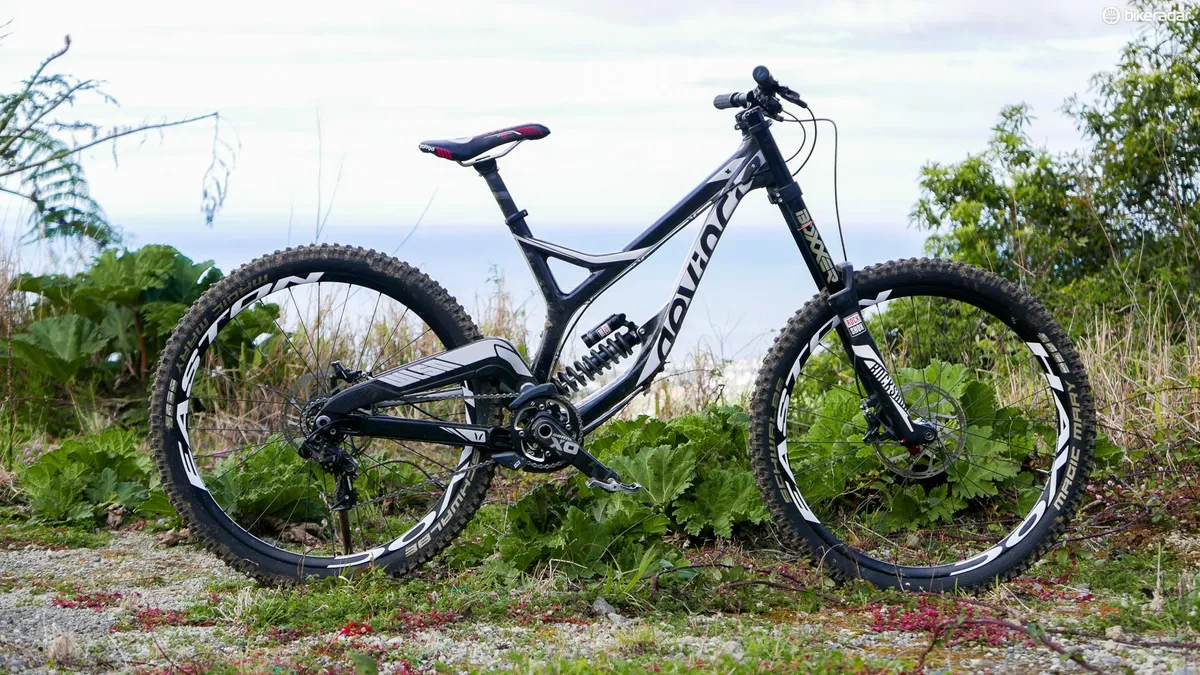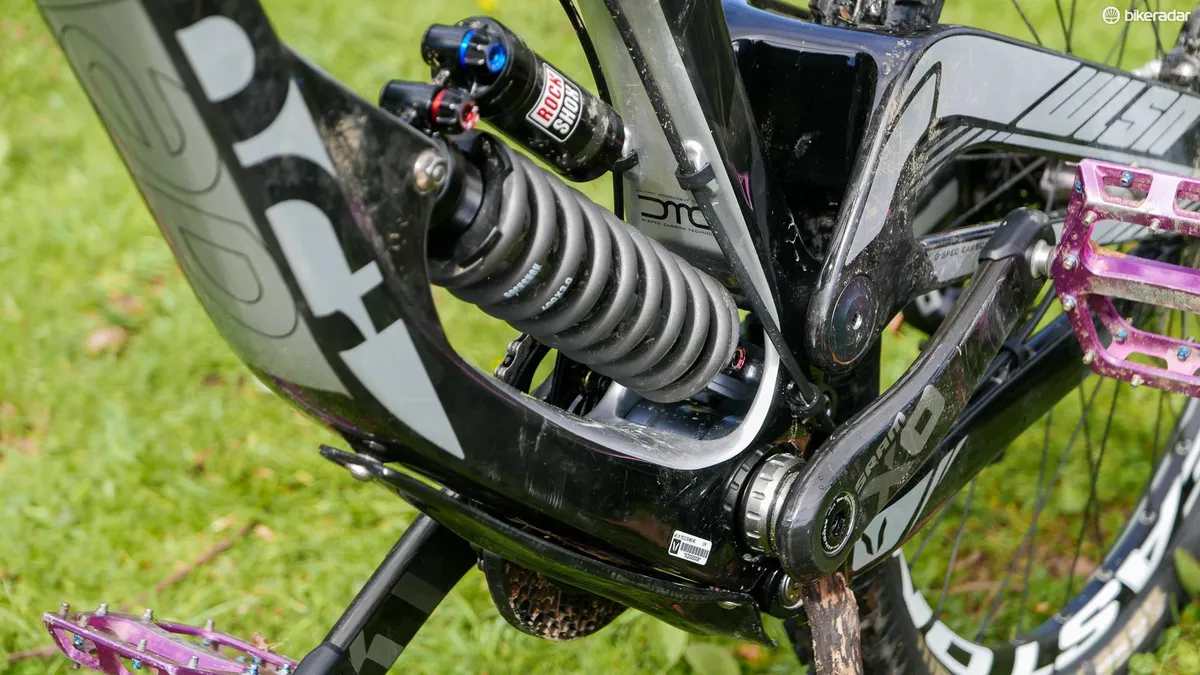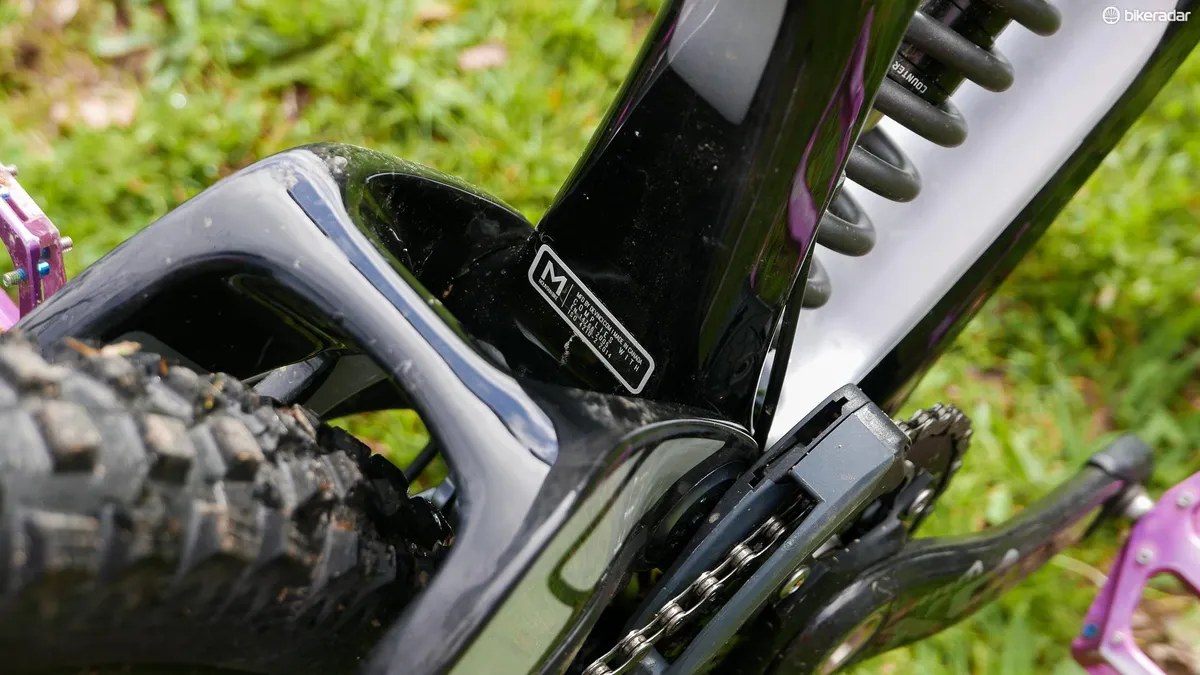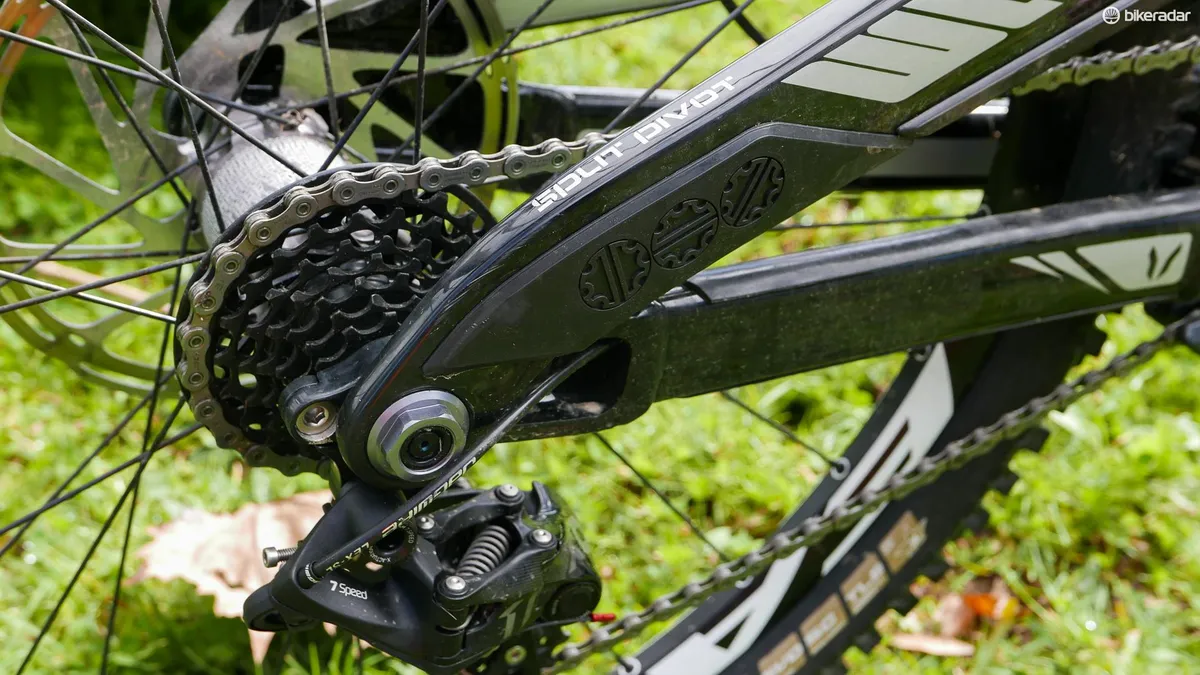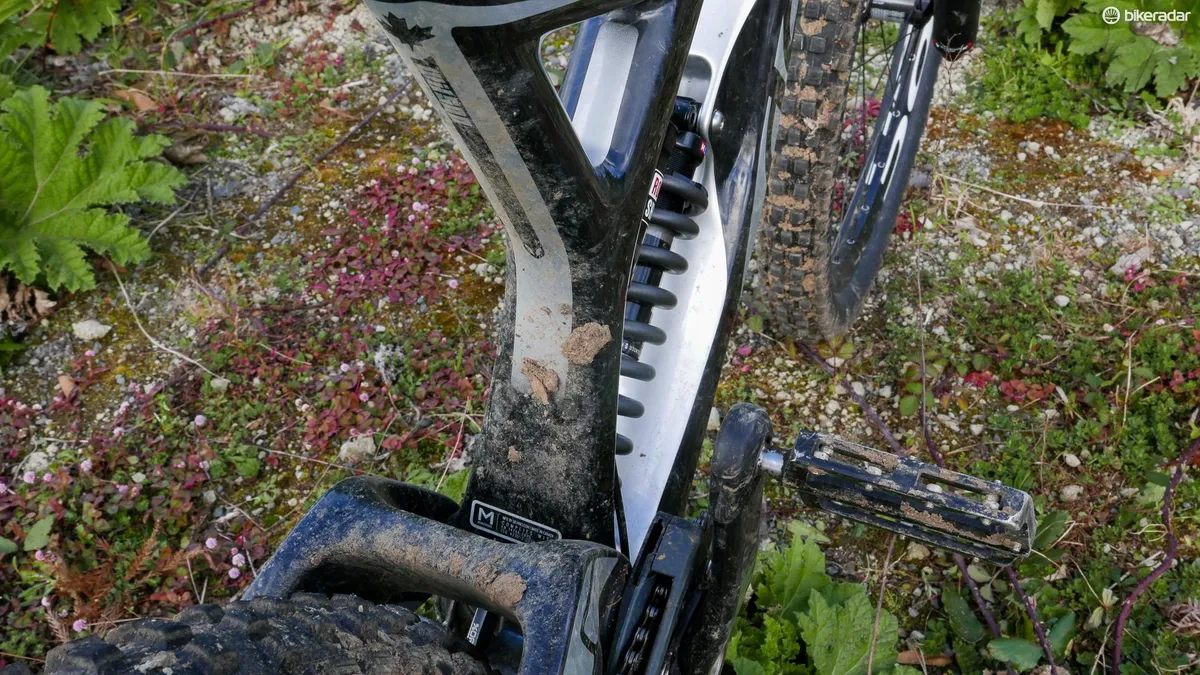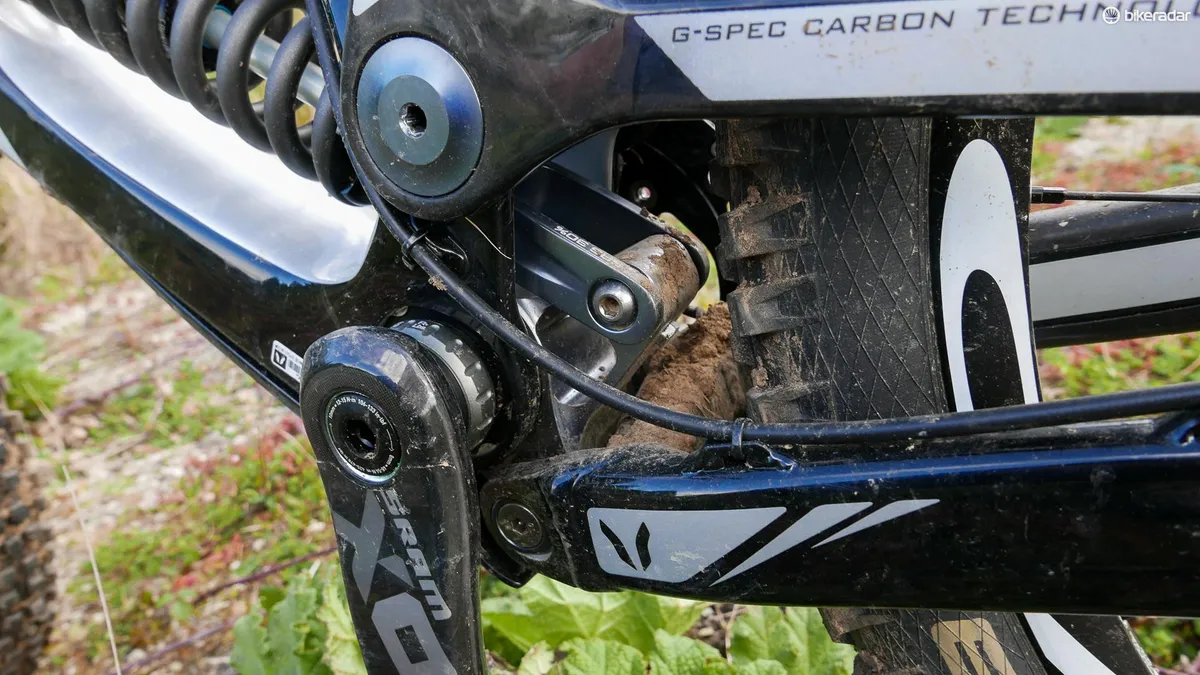For a relatively small bike brand, Devinci has managed to make a pretty big splash in the world of downhill racing. Some of that has been down to the undeniable talent of its star rider Stevie Smith, but the firm's Wilson platform has proved itself more than up to the job of World Cup-level racing.
After the last year’s update to accommodate 650b wheels, it’s small surprise that Devinci has reintroduced a carbon frame option for 2016. Thanks to the move to composite for everything save the linkage hardware and chainstays, an impressive 400g has been shaved from the frame. That means the top-end SL build tips the scales at a highly competitive 16.1kg/35.5lbs.
Apart from the weight savings and the ability of the frame engineers to tune the ride feel with the carbon layup, there are a few neat tweaks that the alloy bike doesn’t have. The first are the integrated fork bump stops that help protect the frame from any damage from the triple clamp fork in a crash. They also double up as cable guides for the externally routed cables, which might not be as neat looking as internal routed ones but will give mechanics everywhere a much easier life.
The second is the chunky down tube guard, which helps protect the carbon underbelly from anything that the front wheel throws up. You can drop a fair amount of weight if, like the team, you get rid of this but for riders that have to pay for their frames, this would seem a poor idea.
A pivotal design

The suspension delivers 204mm of rear-wheel travel
Elsewhere, the bike will be extremely familiar to anyone who has ridden the alloy bike. That’s because it shares the same geometry and uses the same Split Pivot suspension system to offer up 204mm of rear wheel travel paired to a 200mm fork up front.
It’s a neat system, with the shock tucked down and offset to the side in the belly of the bike, keeping the centre of gravity low. The main pivot sits in pretty much in line with the chain on a 36t ring, keeping it neutral under pedalling or compression. It’s also seriously broad, which translates into a stiff rear end.
The concentric pivot around the rear axle also means that braking force doesn’t affect the suspension response, meaning that it’s much more stable when trying to shed speed on rough terrain. The shock it driven by a small linkage that pivots around the bottom bracket. You only notice how well packaged this is when it’s stripped down, which is a simple enough task.

The lower suspension link drives the shock and also pivots around the bottom bracket
A safe shape
While the suspension is innovative, the geometry is conservative. Reach is a relatively tight 436mm for the size Large frame, though stack remains constant among all the frame sizes at 594mm thanks to the dinky 100mm head tube. That means you can get a decently low front end if you desire, while the 63.2-degree head angle is stable enough but not the slackest out there. For such a long travel bike, the chainstays are impressively tight at 435mm however, helped by the Split Pivot layout.

As well as saving weight, the carbon has neat touches like the fork bump stops which double as cable guides
There will be three bikes in the Wilson range, with the base model Carbon XP costing £3499.99 / $4659. The Carbon RC will be £4,199 / $5,959 and the top end SL costing £5,499 / $7,759. If you prefer to build your own (if you're in Australia, your only option), the frameset will cost £2,999 / $3,359 / AU$5,690.
A gentle impression
Our very brief initial impressions were somewhat hampered by extremely greasy trails, which turned our test ride into more of an exercise in not falling off cliffs, but we’ve got a bike coming soon for a full First Ride test.
What we could ascertain is that the bike is reactive and keen to change direction without being overly nervous. As with any long-travel bike, it only starts to give it’s best when being pushed seriously hard, the suspension starting to come alive the harder and rougher it gets, with a nicely progressive feel that's designed to work best with the fitted coil shock. The Split Pivot system does pedal very well, despite having much less anti-squat (and hence pedal feedback) than other bikes in the Devinci range that share the design.
